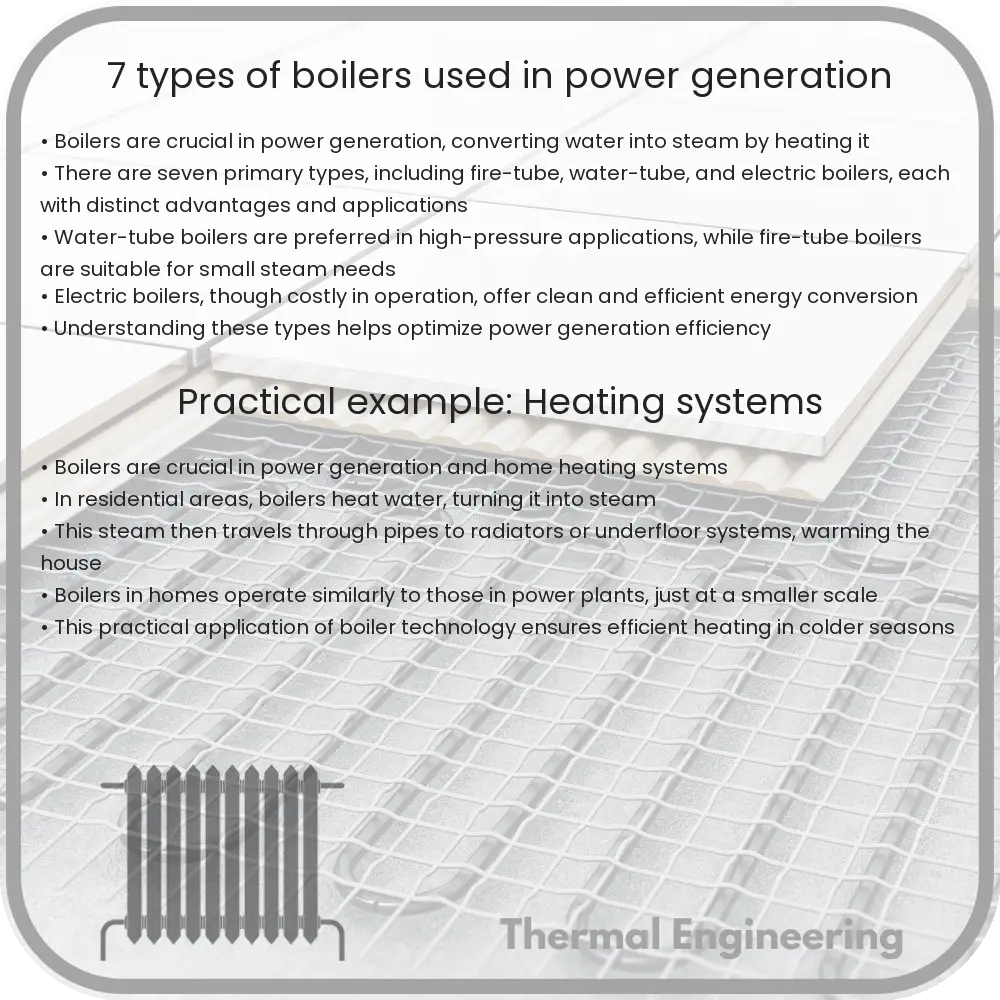Learn about seven key types of boilers used in power generation, each tailored for specific performance and efficiency needs.

7 Types of Boilers Used in Power Generation
Boilers are fundamental to power generation, converting water into steam which then drives turbine generators to produce electricity. Various types of boilers have been developed to suit different requirements and operating conditions. Here, we discuss seven prominent boiler types used in the power generation industry. Each boiler type exhibits unique features tailored for specific functionalities and energy efficiency.
1. Fire-Tube Boiler
In fire-tube boilers, hot gases pass through one or more tubes, which run through a sealed container of water. The heat from the gases is transferred through the walls of the tubes by thermal conduction, heating the water and ultimately creating steam. This type of boiler is typically used in lower-pressure applications.
2. Water-Tube Boiler
Unlike fire-tube boilers, in water-tube boilers, water flows inside the tubes and is heated by external combustion gases that envelope the tubes. This design is suitable for high-pressure applications and large power outputs because water-tube boilers are able to produce steam at higher pressures and rates.
3. Packaged Boiler
These are small water-tube boilers, generally used when demand is not very high and space is limited within the plant. They come packaged from the manufacturer with all the components needed for the operation, making them easy to transport and install.
4. Stoker Fired Boiler
Stoker-fired boilers were a popular choice in the 20th century, particularly for residential heating. Coal is burned on a grate, which allows air to pass up through it, facilitating combustion. These boilers are more adaptable to different types of fuel and are known for their robust operation.
5. Pulverized Fuel Boiler
Most commonly used in large power plants, pulverized fuel boilers finely grind coal into a powder form. This allows it to burn more efficiently as air and fuel interact closely together. The finely ground coal powder is blown into the combustion chamber and burns at high temperature.
6. Fluidized Bed Boiler
An innovative type of boiler, the fluidized bed boiler, uses the principle of fluidized bed combustion to enhance the heat output and thermal efficiency. It features furnaces that contain very small particles of, for example, limestone or sand, which are suspended in an upward flowing stream of hot air and combustion gases. This setup allows for excellent heat transfer and efficiency.
7. Heat Recovery Steam Generator (HRSG)
This type of boiler is used predominantly in combined cycle power plants. These boilers are designed to recover heat from the exhaust of gas turbines, increasing overall efficiency. HRSGs produce steam by harnessing heat waste, which could otherwise be lost, from the gas turbine exhaust.
Each type of boiler plays a crucial role in power generation, their design and operational characteristics geared towards optimizing efficiency, performance, and longevity. Understanding these differences helps in selecting the appropriate boiler for each power generation application.